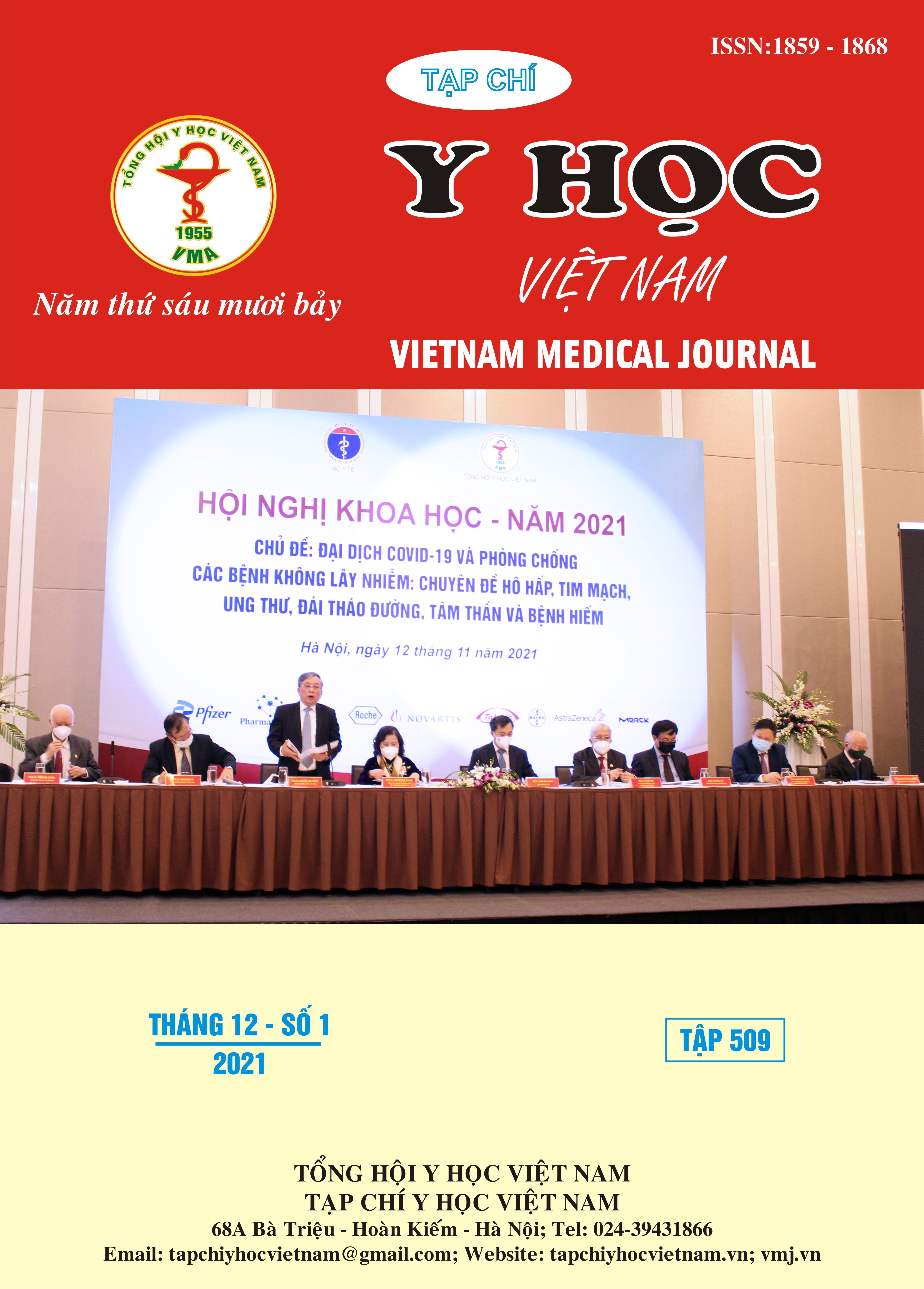RESULTS OF IMPLEMENTATION OF 1-HOUR BUNDLE FOR SEPSIS AND SEPTIC SHOCK IN THE INTENSIVE CARE UNIT, BACH MAI HOSPITAL
Main Article Content
Abstract
Objectives: To evaluate results of implementation of 1- hour bundle for sepsis and septic shock in the Intensive Care Unit, Bach Mai Hospital. Subjects and methods: A retrospective study was conducted in 96 patients with sepsis or septic shock in the Intensive Care Unit, Bach Mai Hospital from March 2021 to October 2021. The implementation of the 1-hour bundle was divided into 2 levels: compliance and non-compliance. Treatment results when apply the 1-hour buldle were evaluated based on the clinical outcomes, duration of mechanical ventilation, duration of vasopressor using, the length of hospital stay and the length of stay in the intensive care unit. Results: Of the 96 patients participating in the study, men accounted for 54% and women accounted for 46%. The mean age was 60±17.3. Sepsis and septic shock patients were 33.0%, 67% respectively, of which pneumonia accounted for 33.3%, gastrointestinal infections accounted for 27.0%. Overall compliance of 1-hour bundle rate was 57.3% and non-compliance was 42.7%, in which adherence to vasopressors was highest (100%), lowest was adherence to antibiotics in the first hour (66.7%). The mortality rate or critical illness with inevitable death in the compliance group was statistically significantly lower than in the non-compliance group (20% vs 43.9%, p<0.05). The duration of mechanical ventilation in the compliance group was shorter than in the non-compliance group (days: 5 vs 9.5, p<0.05). Others secondary evaluation indicators: length hospital stay, length of stay in the intensive care unit, duration of vasopressor using were shorter not statistically significant in the compliance group compared with the non-compliance group (p>0.05). Conclusions: These results suggested that adherence to the 1-hour bundle according to the Surviving Sepsis Campaign 2018 guidelines improved the outcomes of sepsis or septic shock patients. However, the compliance rate was still low, so training programs are needed for medical staff in the intensive care unit.
Article Details
Keywords
septic shock, 1-hour bundle compliance
References
2. Lynn NB, Gupta C, Vaaler M, Held J, Leon L (2018). Severe sepsis 3-hour bundle compliance and mortality. Am J Infect Control; 46(11): 1299-1300. doi:10.1016/j.ajic.2018.04.228
3. Cardoso T, Carneiro AH, Ribeiro O, Teixeira-Pinto A, Costa-Pereira A(2010). Reducing mortality in severe sepsis with the implementation of a core 6-hour bundle: results from the Portuguese community-acquired sepsis study (SACiUCI study). Crit Care; 14(3):R83. doi:10.1186/cc9008
4. Rhodes A, Evans LE, Alhazzani W, et al (2017). Surviving Sepsis Campaign: International Guidelines for Management of Sepsis and Septic Shock.Intensive Care Med; 43(3):304-377.
5. Prachanukool T, Sanguanwit P, Thodamrong F, Suttapanit K (2021). The 28-Day Mortality Outcome of the Complete Hour-1 Sepsis Bundle in the Emergency Department. Shock; 56(6):969.
6. Zou Y, Liao L, Wei Z, et al (2021). A 1-hour Bundle compliance survey of the “Surviving Sepsis Campaign” and its impact on the prognosis of sepsis patients: a multicenter, prospective observational cohort study. Zhonghua Wei Zhong Bing Ji Jiu Yi Xue; 33(6):671-675.


